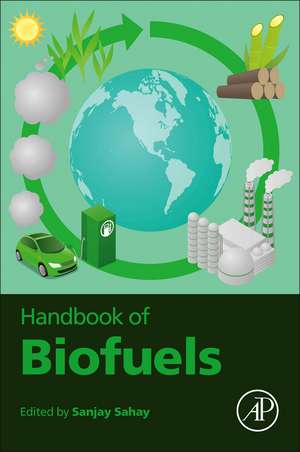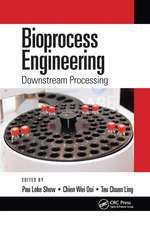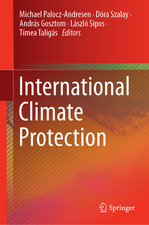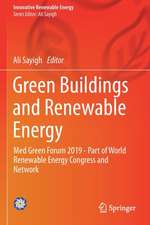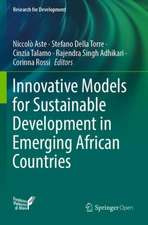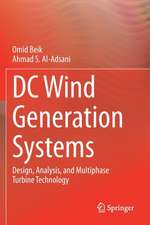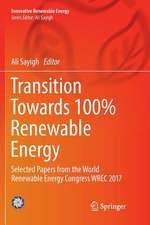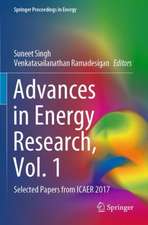Handbook of Biofuels
Editat de Sanjay Sahayen Limba Engleză Paperback – noi 2021
With chapters on the techno-economic analysis of biofuel production and concepts and step-by-step approaches in bioenergy processing, the objective of this book is to present a comprehensive and all-encompassing reference about bioenergy to students, teachers, researchers and professionals.
- Reviews all existing and emerging technologies surrounding the production of advanced biofuels, including biodiesel and bioethanol
- Includes biofuel applications with compatible global application case studies
- Offers new pathways for converting biomass
Preț: 931.11 lei
Preț vechi: 1192.36 lei
-22% Nou
Puncte Express: 1397
Preț estimativ în valută:
178.19€ • 193.49$ • 149.68£
178.19€ • 193.49$ • 149.68£
Carte tipărită la comandă
Livrare economică 15-29 aprilie
Preluare comenzi: 021 569.72.76
Specificații
ISBN-13: 9780128228104
ISBN-10: 0128228105
Pagini: 690
Ilustrații: 80 illustrations (20 in full color)
Dimensiuni: 216 x 276 mm
Greutate: 1.57 kg
Editura: ELSEVIER SCIENCE
ISBN-10: 0128228105
Pagini: 690
Ilustrații: 80 illustrations (20 in full color)
Dimensiuni: 216 x 276 mm
Greutate: 1.57 kg
Editura: ELSEVIER SCIENCE
Cuprins
A. Introduction
1. An economic analysis of biofuels: policies, trade, and employment opportunities
2. Technoeconomic analysis of biofuel production: concept, steps, and tools
B. Bioenergy: Potential feedstock
3. Plants: a sustainable platform for second-generation biofuels and biobased chemicals
4. Energy plants (crops): potential natural and future designer plants
5. Algal biorefinery: technoeconomic analysis
6. Tapping wastewater resource: why and how?
7. Bioenergy from food waste
C. Bioethanol: 2G and 3G
9. Decongestion of lignocellulosics: critical assessment of physicochemical approaches
10. Deconstruction of lignocellulosics: potential biological approaches
11. Lignin: value addition is key to profitable biomass biorefinery
12. Downstream process: toward cost/energy effectiveness
13. Process integration: hurdles and approaches to overcome
14. Community-level second-generation bioethanol plant: a case study focused on a safety issue
15. Third-generation bioethanol: status, scope, and challenges
D. Biobutanol: renewed interest
16. Biobutanol, the forgotten biofuel candidate: latest research and future directions
E. Biodiesel: potential sources and prospect
17. Algal biodiesel: technology, hurdles, and future directions
18. Microbial biodiesel: a comprehensive study toward sustainable biofuel production
19. Assessment of farm-level biodiesel unit—a potential alternative for sustainable future
F. Biohydrogen: The cleanest fuel
20. Biohydrogen: potential applications, approaches, and hurdles to overcome
21. Biological routes of hydrogen production: critical assessment
22. Thermochemical routes applying biomass: critical assessment
23. Splitting of water: biological and nonbiological approaches
G. Biogas: the decentralised fuel
24. Decentralized biogas plants: status, prospects, and challenges
25. Biogas: microbiological research to enhance efficiency and regulation
H. Syngas
26. Biogas technology implementation in rural areas: a case study of Vhembe District in Limpopo Province, South Africa
27. A biotechnological overview of syngas fermentation
I. Bioelectricity
28. Biofuel cell: existing formats, production level, constraints, and potential uses
29. Enzymatic and microbial biofuel cells: current developments and future directions
30. Biomass-based electrification
J. New directions
31. Nanotechnological interventions in biofuel production
32. Carbon dioxide capture for biofuel production
33. Solar intervention in bioenergy
34. The pursuits of solar application for biofuel generation
1. An economic analysis of biofuels: policies, trade, and employment opportunities
2. Technoeconomic analysis of biofuel production: concept, steps, and tools
B. Bioenergy: Potential feedstock
3. Plants: a sustainable platform for second-generation biofuels and biobased chemicals
4. Energy plants (crops): potential natural and future designer plants
5. Algal biorefinery: technoeconomic analysis
6. Tapping wastewater resource: why and how?
7. Bioenergy from food waste
C. Bioethanol: 2G and 3G
9. Decongestion of lignocellulosics: critical assessment of physicochemical approaches
10. Deconstruction of lignocellulosics: potential biological approaches
11. Lignin: value addition is key to profitable biomass biorefinery
12. Downstream process: toward cost/energy effectiveness
13. Process integration: hurdles and approaches to overcome
14. Community-level second-generation bioethanol plant: a case study focused on a safety issue
15. Third-generation bioethanol: status, scope, and challenges
D. Biobutanol: renewed interest
16. Biobutanol, the forgotten biofuel candidate: latest research and future directions
E. Biodiesel: potential sources and prospect
17. Algal biodiesel: technology, hurdles, and future directions
18. Microbial biodiesel: a comprehensive study toward sustainable biofuel production
19. Assessment of farm-level biodiesel unit—a potential alternative for sustainable future
F. Biohydrogen: The cleanest fuel
20. Biohydrogen: potential applications, approaches, and hurdles to overcome
21. Biological routes of hydrogen production: critical assessment
22. Thermochemical routes applying biomass: critical assessment
23. Splitting of water: biological and nonbiological approaches
G. Biogas: the decentralised fuel
24. Decentralized biogas plants: status, prospects, and challenges
25. Biogas: microbiological research to enhance efficiency and regulation
H. Syngas
26. Biogas technology implementation in rural areas: a case study of Vhembe District in Limpopo Province, South Africa
27. A biotechnological overview of syngas fermentation
I. Bioelectricity
28. Biofuel cell: existing formats, production level, constraints, and potential uses
29. Enzymatic and microbial biofuel cells: current developments and future directions
30. Biomass-based electrification
J. New directions
31. Nanotechnological interventions in biofuel production
32. Carbon dioxide capture for biofuel production
33. Solar intervention in bioenergy
34. The pursuits of solar application for biofuel generation
